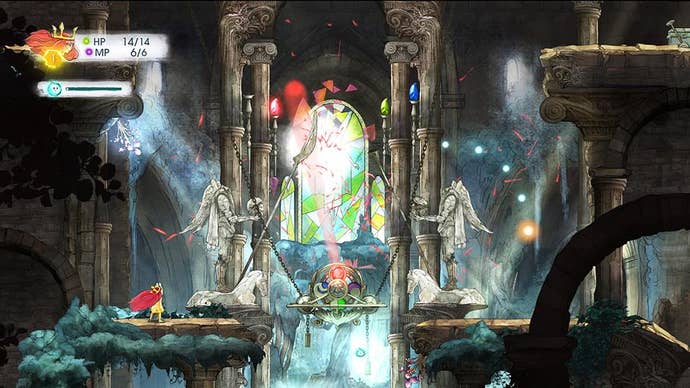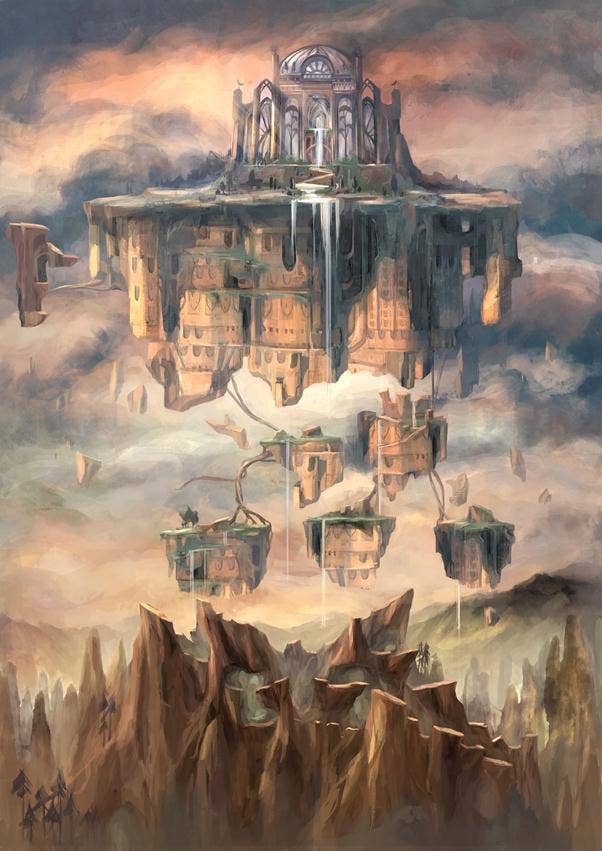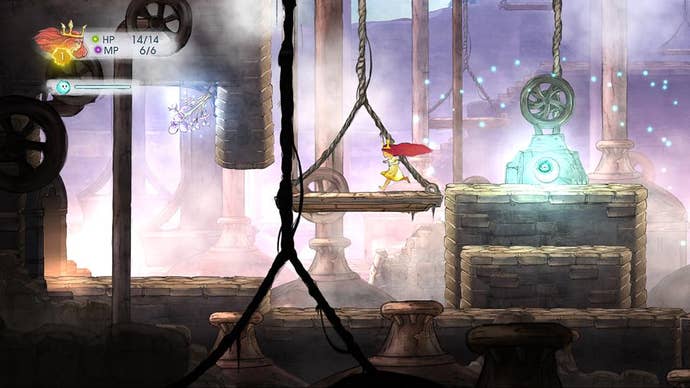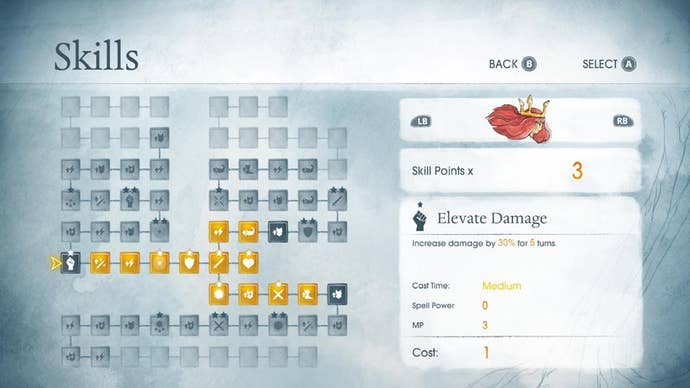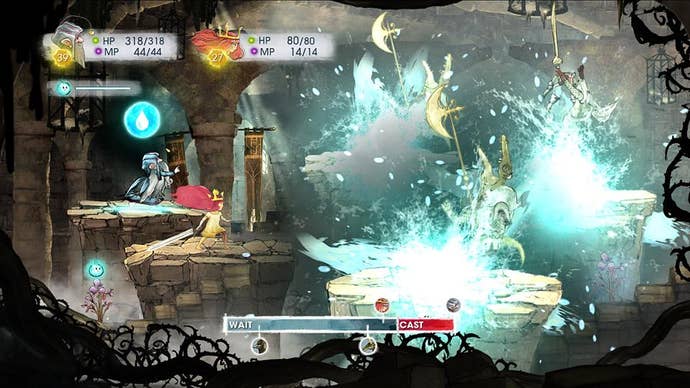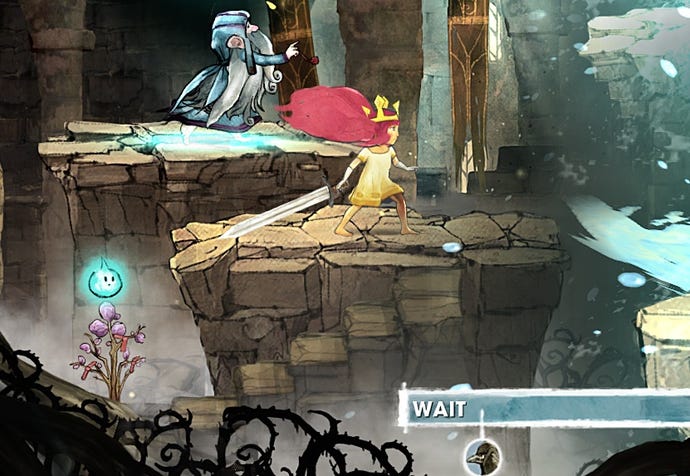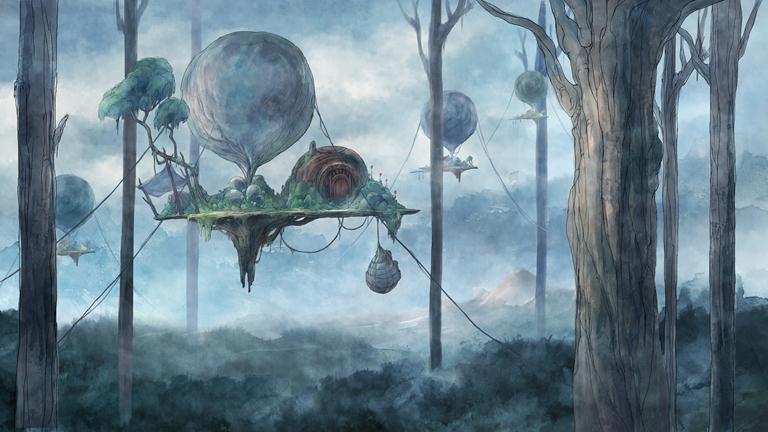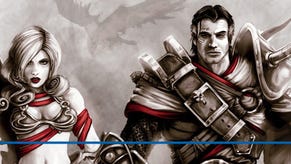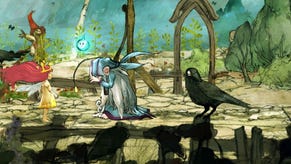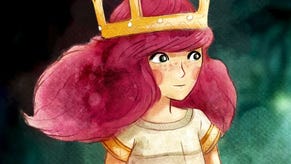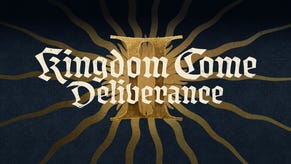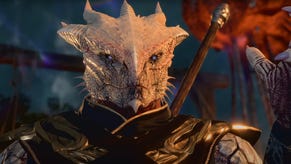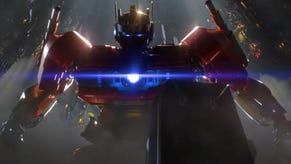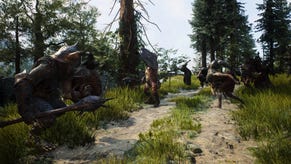Child of Light is a dark fairy tale RPG brimming with potential
Stace Harman goes beyond Child of Light’s disarming good looks to discover an inventive, niche and ambitioous role-playing game.
"Fairy tales have been whitewashed and transformed into saccharin safety nets... when you go back and look at fairy tales like The Little Mermaid, it is a devastating, bloody tragedy."
Were Child of Light a living, breathing person s/he would surely be a tad weary of hearing about how pretty s/he is.
Certainly, the UbiArt Framework used to create the game provides plenty to admire in this area, but underneath the pleasing aesthetic that’s had us all oohing and aahing is a narrative-driven RPG with character and soul that wants to be taken seriously. Based on Child of Light’s opening hours, this desire manifests itself both in the game’s mechanics and narrative to varying degrees of success.
Child of Light’s story begins as one of separation and loss. After a traumatic event, the young princess Aurora finds herself alone in the unfamiliar land of Lemuria. She soon encounters a kindly and mysterious stranger, a host of fantastical creatures and a talking firefly named Igniculus (who is controlled either by the right-hand analogue stick or by a second player on a separate controller). So far so fairy tale, but lead writer Jeffrey Yohalem is adamant that this story is one of complex imagery and sophisticated emotions and that while early events are innocent and straightforward the tale takes on a much darker tone as the story progresses.
“Recently, fairy tales have been whitewashed and transformed into saccharin safety nets for children, which they were never intended to be,” says Yohalem. “In fact, when you go back and look at fairy tales like The Little Mermaid, it is a devastating, bloody tragedy.
“[Fairy tales] were traditionally used to express the rules of society or parental wisdom. We wanted to return to that approach, deep in the dark wood of fairy tales before they were domesticated. At the same time, we want to tell a story that’s very relevant for today’s world.”
By framing the narration and dialogue using established poetry techniques, Yohalem evokes a singsong quality of verse that’s at once familiarly reassuring but that allows for the communication of some deeper ideals. It creates a rhythm that can appeal to young children if read aloud and, in keeping with the fairy tale storyline, fits well with the game’s overall visual and aural design.
Similarly, the gameplay starts off gently enough, with an exploration of basic controls and game concepts before the gradual introduction of combat strategies, the levelling system and companion characters. If there’s any complaint on this front it’s that things feel like they take a little too long to become challenging, on normal difficulty at least. Having played two and a half hours of Child of Light’s estimated twelve-hour runtime, I only once felt in danger of losing a battle (although this could likely be remedied by cranking the difficulty up to hard).
Nonetheless, the combat system feels full of potential for those that want to explore its nuances. Taking cues from the Active Time Battle system of Final Fantasy titles, combatant’s markers move along a single timeline at varying speeds depending on their base abilities and passive perks. Upon reaching the “Cast” portion of the bar, the action pauses while you choose an appropriate action from familiar options of attack, defend, spell-casting and, later, swapping out a character for another in your party.
This is where it gets interesting because each action takes time to perform, which then dictates how quickly your avatar’s marker moves through the cast section of the bar and it’s only once the marker reaches the very end of it that the chosen action will be taken. For example, defending is instant, so if an enemy is about to launch an attack your character will take reduced damage and, as a bonus, will move more quickly along the battle bar in the next round. A powerful spell, however, will take longer to perform and risks being interrupted by an incoming attack that has a chance to knock you down the pecking order on the battle bar. This all works both ways and so a risk reward system comes into play as you balance swift, low damage attacks in the hope of disrupting your enemies’ actions with exploiting more powerful actions in order to end the fight.
Add to this an elemental crafting system, varied upgrade paths for each character and the role of firefly Igniculus - who can be used to slow down enemies and provide light healing to allies - and you have a relatively straightforward but rewarding combat system. Hopefully, this depth will be exploited a little farther into the game because while you level up plenty in the early hours, the battles are easy enough that you don’t really need to pay too much mind to what skills and passive boosts you’re picking.
Outside of combat, Child of Light also features basic platforming elements and, as Aurora gains the ability to fly, navigational challenges and environmental hazards. A number of the puzzles are based, appropriately enough, around the manipulation of light and shadow, while there’s also a handful of block and switch problems to solve. Certainly, its opening hours and overall tone are welcoming enough to appeal to casual players, young children and long suffering gaming widow/ers but there’s depth here also.
"We’re not attempting to pull off that thing of internally saying ‘We’re going to create this hot female character but claim that it’s going to be about her being a hero’"
Despite its largely familiar mechanics, Child of Light feels honest and refreshing, helped in no small part in this regard by its art style. However, its characters also offer a breath of fresh air, with Aurora’s tender age and initial egocentric outlook highlighting her innocence and privileged upbringing. These traits also cast her in stark relief against the stereotypical angst-ridden teenager that often features front and centre of such JRPG-style titles.
“We didn’t want to tell a story about a princess who finds prince charming, we feel like that is old fashioned and not true, so this is a story about the making of a hero and that hero happens to be a little girl,” Yohalem answers when I mention this familiar trend to him.
“Having a young girl rather than a teenage girl means that there’s no question of what we’re trying to do. We’re not attempting to pull off that thing of internally saying ‘We’re going to create this hot female character but claim that it’s going to be about her being a hero’.”
Child of Light feels like it could be genuinely compelling and I applaud Ubisoft for giving free rein to Yohalem and creative director Patrick Plourde to create something new and relatively niche. Hopefully, the challenge will ramp-up soon after those early hours to encourage players to make the most of the tools that the game provides and explore different strategies and experiment with different characters. Judged on potential, there’s more than enough here to suggest that Child of Light needn’t coast by on its good looks alone.
Child of Light launches on PC, PS3, PS4, Xbox 360, Xbox One and Wii U worldwide on April 30.

